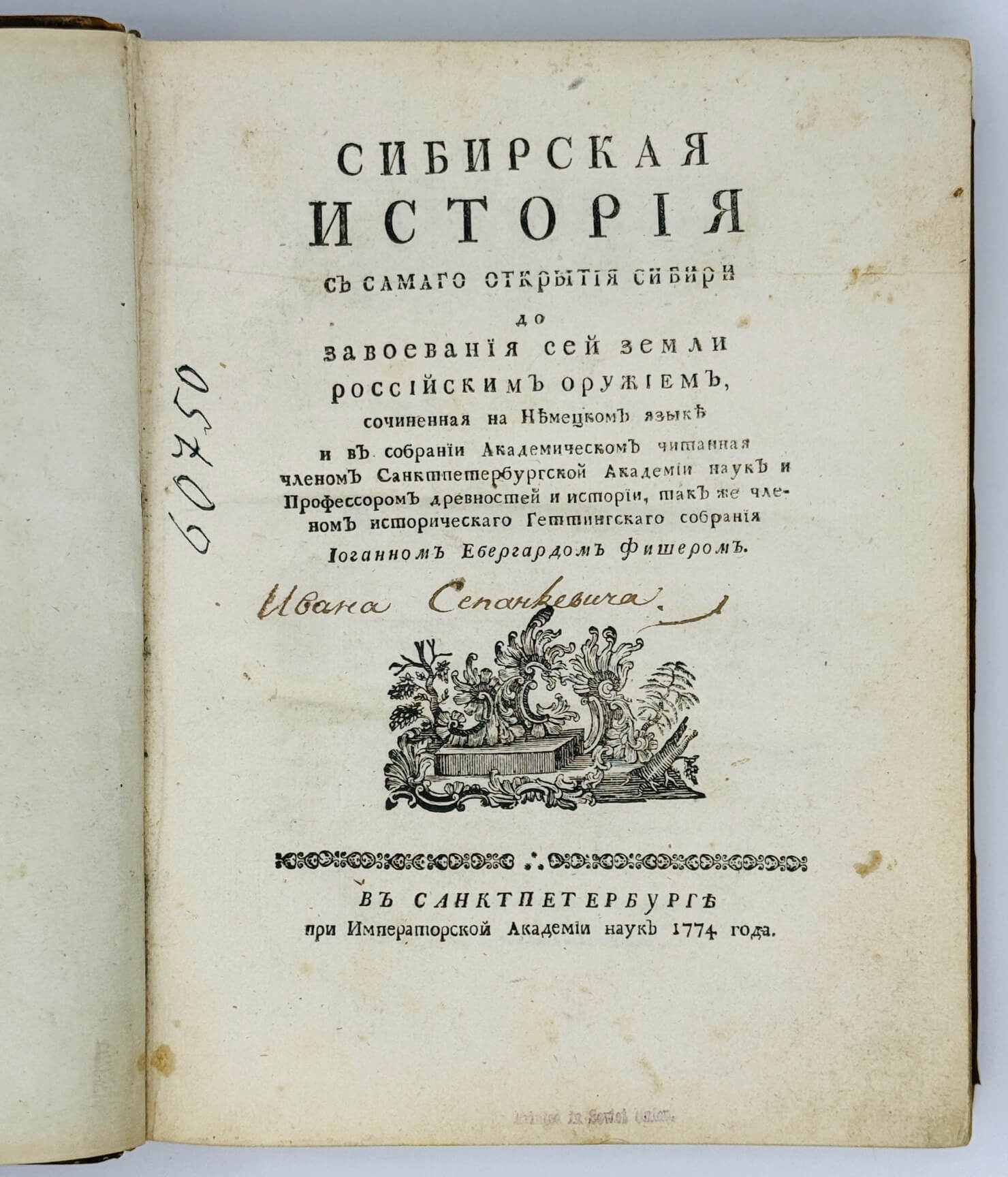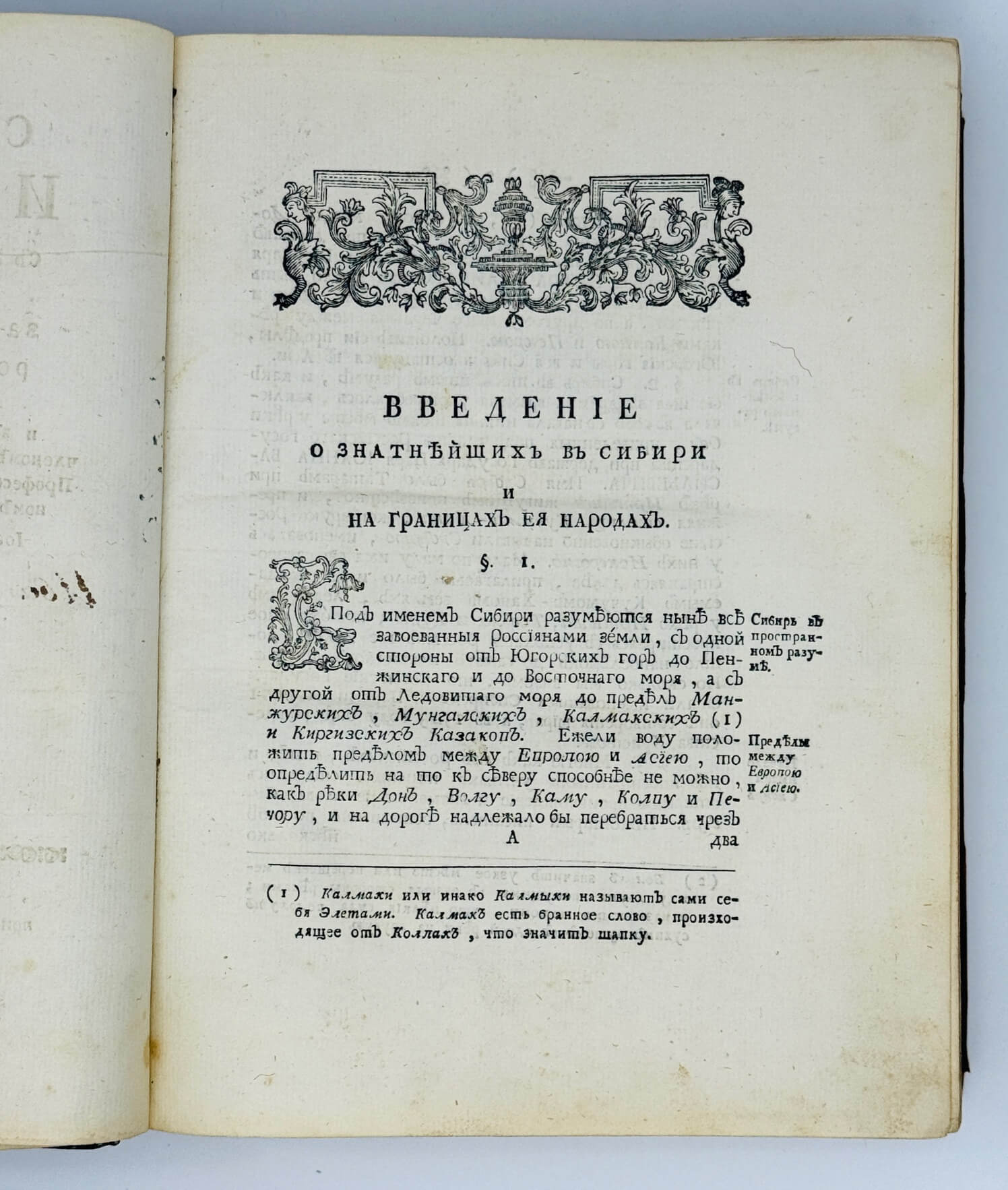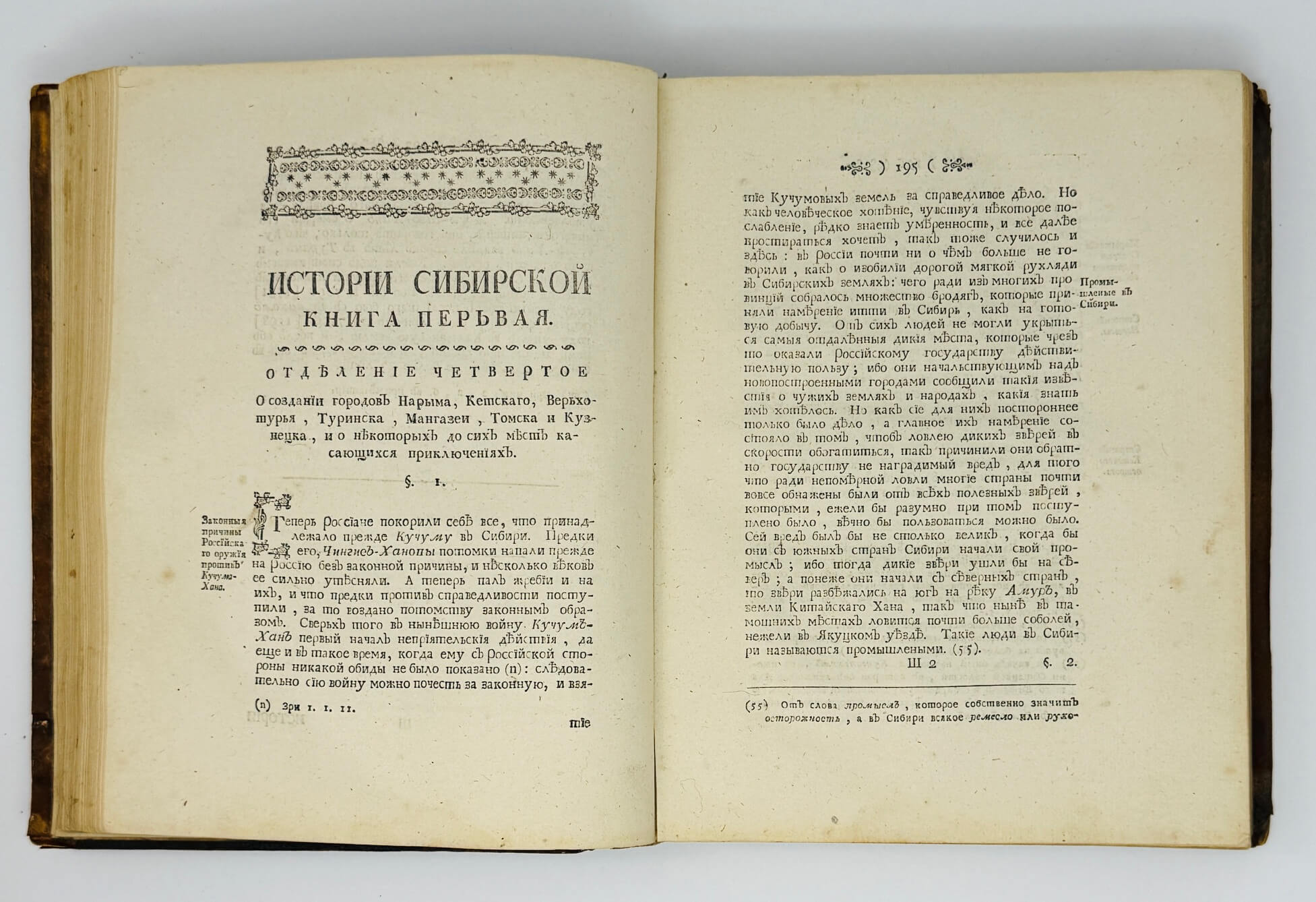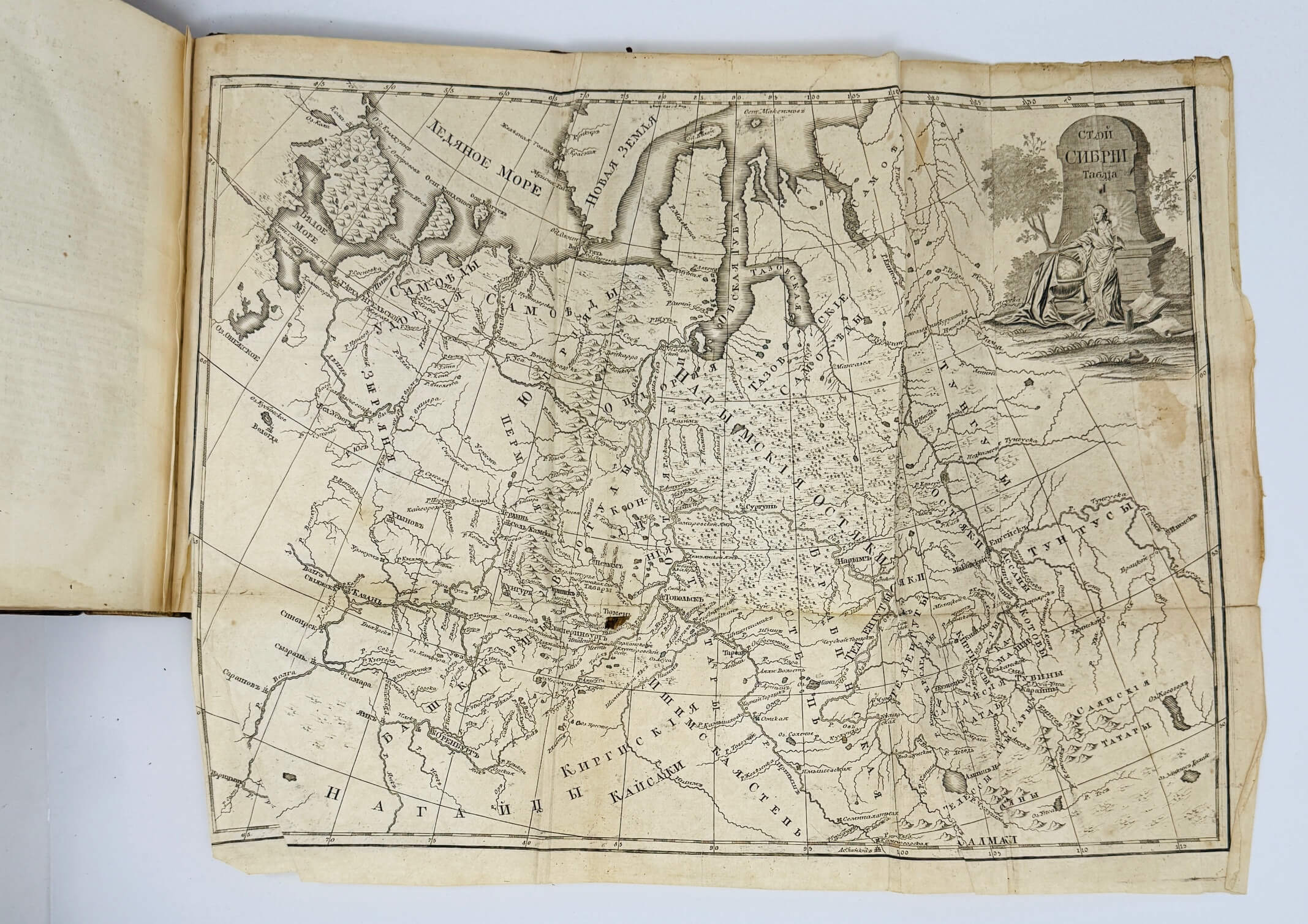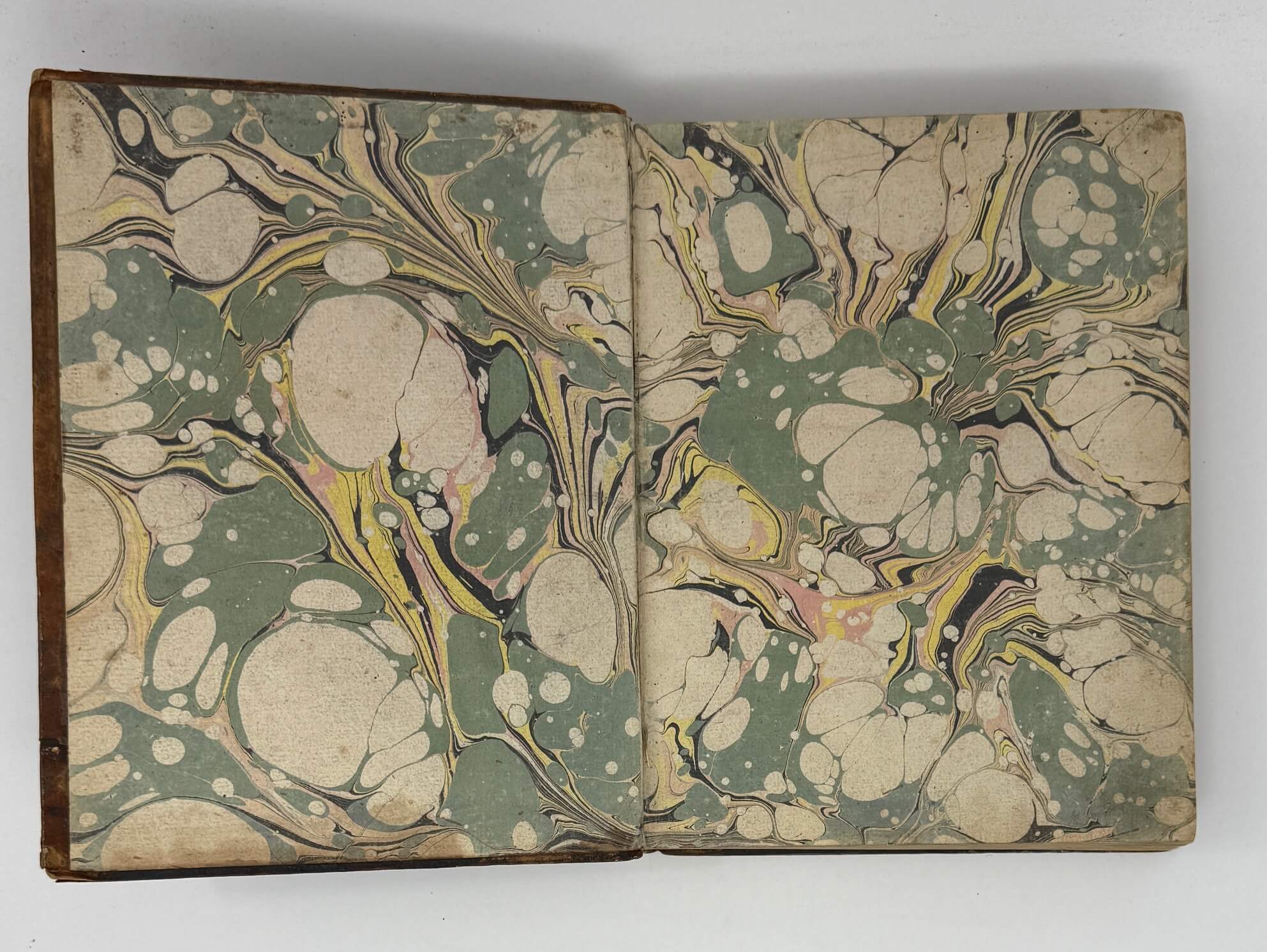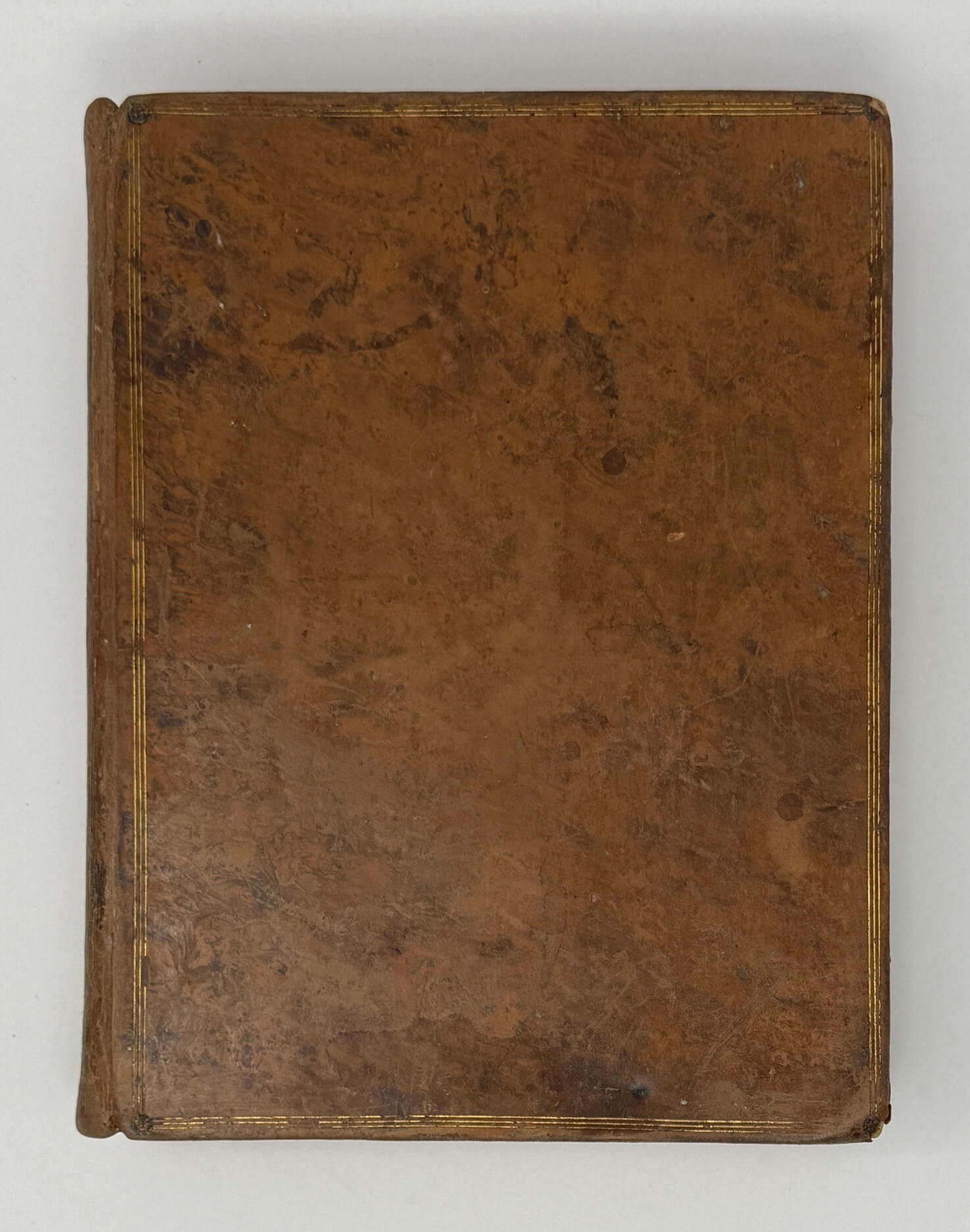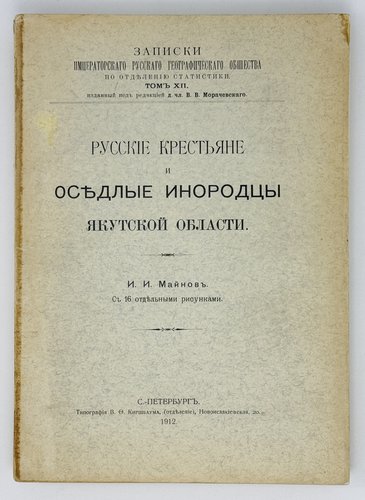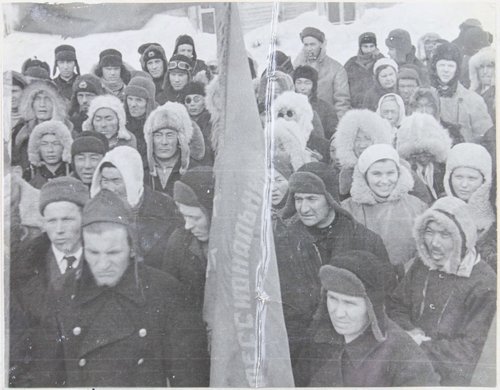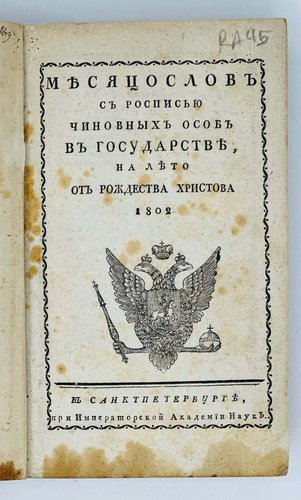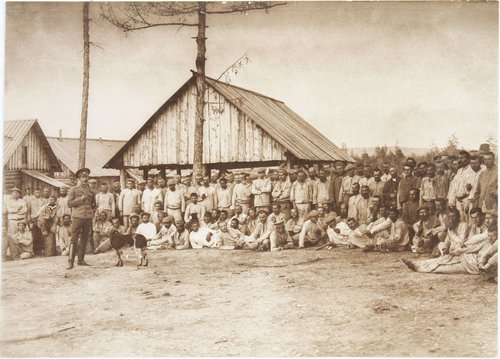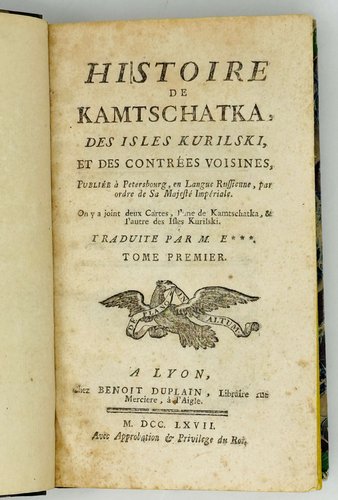

.jpg.700x700_q85_autocrop_replace_alpha-%23FFFFFF.jpg)
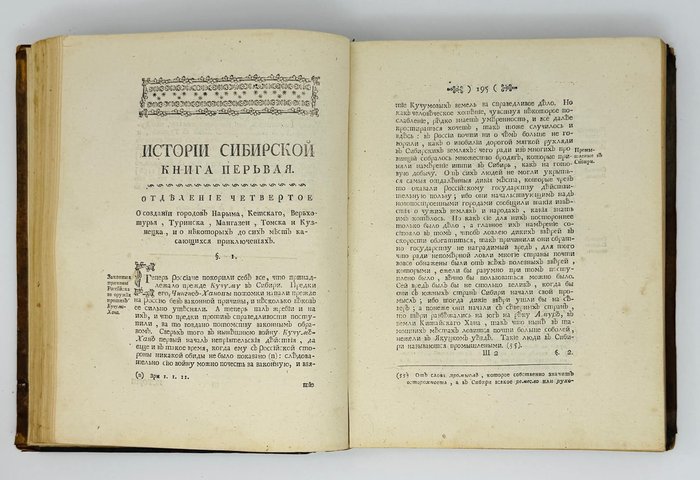
.jpg.700x700_q85_autocrop_replace_alpha-%23FFFFFF.jpg)
.jpg.700x700_q85_autocrop_replace_alpha-%23FFFFFF.jpg)
.jpg.700x700_q85_autocrop_replace_alpha-%23FFFFFF.jpg)

.jpg.700x700_q85_autocrop_replace_alpha-%23FFFFFF.jpg)
#BK2025
1774
First and only Russian edition. Quarto (ca. ). [1 – t.p.], 631 pp. With two folding copper-engraved maps. Title page with a woodcut vignette; several woodcut headings, tailpieces and initials in text. Early 19th-century owner’s ink inscription (“of Ivan Sepankevich”), later ink number and 20th-century ink stamp “Printed in the Soviet Union” on the title page. Early 19th-century brown full calf; spine with a dark green gilt-lettered title label and gilt-tooled decorative ornaments. Binding slightly rubbed on extremities, but overall a very good copy.
Very rare Russian imprint with only nine paper copies found in Worldcat (Library of Congress, New York Public Library, Alaska State Library, University of Alaska Fairbanks, University of California Berkeley, U.S. Air Force Academy, University of Cambridge, Thuringian University and State Library, Darmstadt University).
The only complete publication (until 2005) of Gerhard Friedrich Müller’s “Sibirische Geschichte” - the first fundamental Russian work on the history of Siberia. The book is based on the historical materials that Müller collected during his participation in the Great Northern or Second Kamchatka Expedition (1733-1743) led by Vitus Bering (1681-1741). As one of the heads of the expedition’s “Academic detachment,” for ten years, he travelled across Eastern Siberia, between Beryozov, Ust-Kamenogorsk, Nerchinsk and Yakutsk, exploring archives of local administrations and assembling a vast collection of original papers and their copies (now deposited in the Russian State Archive of Ancient Acts/RGADA as “Müller’s portfolios”).
Müller never managed to publish a complete work on the history of Siberia. Out of 23 planned voluminous chapters, the first five (covering the period from ancient times to 1618) were published in 1750 as “Opisanie Sibirskogo Tsarstva” (SPb., Imperial Academy of Sciences) without illustrations. Chapters 6-8 of Müller’s manuscript were issued in 1764 as “Sibirische Geschichte” in his magazine “Ezhemesyachnye Sochineniya…”. The first German publication in the St. Petersburg periodical “Sammlung Russischer Geschichte” (1761-1763) included chapters 1-10 (ending with the suppression of Khan Kuchum's descendants in 1660).
It was only the abridged edition, prepared by member of the Imperial Academy, historian and philologist Johann Fischer, who took over Müller’s position during the Great Northern Expedition (Fischer spent at least seven years in Siberia, 1740-1747), that finally included all 23 chapters of Müller’s original manuscript. Fischer prepared his version, written in German, as early as 1757, but the book was published by the Academy of Sciences only in 1768 under the title “Sibirische Geschichte von der Entdeckung Sibiriens bis auf die Eroberung dieses Landes durch die russischen Waffen.” In the preface, Fischer mentioned why he was assigned the work: Müller’s involvement in other projects and lack of time. Fischer’s book was illustrated with two copper-engraved maps of western and eastern Siberia (see more about the history of Müller’s and Fischer’s works in: Andreyev, A.I. Ocherki po istochnikovedeniyu Sibiri/ AN SSSR. Issue 2. M.-L.: Nauka, 1965).The
The Russian translation of Fischer’s “Sibirische Geschichte” was issued in 1774, after his death. According to Svodny Katalog XVIII (7800), the translation was made by an Academy of Science associate Vasily Ivanovich Lebedev (1716-1771); “books 1-3” of Fischer’s text were corrected by A.Y. Polenov, “books 4-5” – by a student of the Academy’s gymnasium school, Ivan Lyubetsky, “under the supervision of teacher Kozhin.” The Russian edition didn’t include the preface - due to too many praises to the retired director of the Academy, Count Vladimir Orlov (see: Andreyev, p. 118, footnote) - and historical and geographical indexes of the German edition. The Russian edition was printed in 2400 copies (Svodny Katalog XVIII, 7800).
Fischer’s narration extends as far as 1660, containing important relations on the first Russian voyages along the Siberian Arctic coast, Yerofey Khabarov’s military expedition along the Amur River and colonization of the region, and Russian embassies in China, not included in the chapters published by Müller.
The Russian edition is also illustrated with two folding maps, reengraved to change all geographical names from German into Russian. The map of western Siberia covers the area from the White Sea and Volga River in the west to the Yenisey River and its tributaries in the east, with southern parts of the Barents and Kara Seas, the Yamal Peninsula and Yuzhny Island of Novaya Zemlya in the north. The south border of the map stretches from Tsaritsyn (Volgograd) to Semipalatinsk (Semey, Kazakhstan). The map of eastern Siberia, signed by “student S. Sklunov” (right lower corner), shows the region from the Yenisey River in the west to Chukotka and Kamchatka in the east (the easternmost part of Chukotka where Cape Dezhnyov is located, is shown very roughly). The map includes the Commander and Kurile Islands, as well as “Shantar Island, or Sagalin anga gata in Manchurian, which means the Island of the Black River.” The Sea of Okhotsk is named “Tungus Sea.” In the south, Lake Baikal and the basins of the Amur and Selenga rivers are outlined in detail. Both maps show the main towns and settlements and thoroughly mark the regions inhabited by various Siberian tribes
This Russian edition quickly became a bibliographic rarity and was included in several rare book catalogues (by Bitovt, Bacmeister, Solovyov, &c.). For over 200 years, it remained the only complete publication of Müller’s history of Siberia. Fischer’s work was never reissued in Russian; a reprint of the German edition was published in 1973. The first complete scientific edition of Gerhard Müller’s “Sibirische Geschichte” was issued only in 2005 (Miller, G.F. Istoriya Sibiri. M.: Vostochnaya Literatura RAN, 2005; 3 vols.).
Svodny Katalog XVIII 7800; Sopikov 4908; Bitovt (Redkiye russkie knigi i letuchiye izdaniya XVIII veka) 1825; Solovyov, Catalogue No. 100, 295; Bacmeister (Russische Bibliothek) IV, 93-94.

